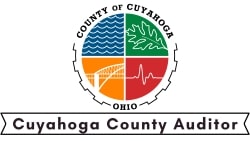Cuyahoga County Auditor is a large urban county in northeastern Ohio, United States. It is located on the south shore of Lake Erie, on the maritime border between the United States and Canada. The 2020 census reported a population of 1,264,817, making it the second-largest municipality in the state. Cleveland is the county seat and a large city. The municipality is crossed by the Cuyahoga River, which gives it its name. “Cuyahoga” is an Iroquois word meaning “crooked river.” Cuyahoga County is the heart of the Cleveland metropolitan area and the Cleveland-Akron-Canton Combined Statistical Area.
Cleveland is the county seat and a large city. The municipality is crossed by the Cuyahoga River, which gives it its name. “Cuyahoga” is an Iroquois word meaning “crooked river.” Cuyahoga County is the heart of the Cleveland metropolitan area and the Cleveland-Akron-Canton Combined Statistical Area.
The areas of Cuyahoga County, formerly part of the French colony of Canada (New France), were ceded to Great Britain in 1763 and recalled the Province of Quebec. In 1795, the Connecticut Land Company purchased part of the property, which became part of the Connecticut Western Reserve in the Northwest Territory. A year later, General Moses Cleaveland founded Cleveland near the mouth of the Cuyahoga River. Cuyahoga county has an area of 1,246 square miles (3,230 km²), of which 457 square miles (1,180 km²) are land and 788 square miles (2,040 km²) (63%) are water. In terms of area, it is the second-largest county in Ohio. The southeastern part of the county contains part of Cuyahoga Valley National Park.
Cuyahoga county has an area of 1,246 square miles (3,230 km²), of which 457 square miles (1,180 km²) are land and 788 square miles (2,040 km²) (63%) are water. In terms of area, it is the second-largest county in Ohio. The southeastern part of the county contains part of Cuyahoga Valley National Park.
The county median income was $43,603, and the per capita income was $26,263. About 10.3% of families, 19.4% of those under 18, 9.3% of those over 6,5, and 13.1% of the total population lived below the poverty line.
The Cuyahoga County Auditor was a key elected official in Cuyahoga County, Ohio, responsible for various financial and administrative functions. In 2011, Cuyahoga County transitioned to a county-level form of government, replacing many elected positions (including auditor) with appointments or combining responsibilities with other positions, such as treasurer.